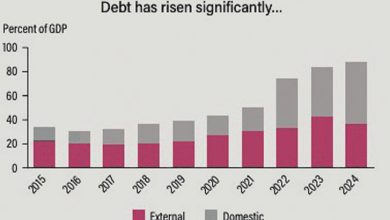Malawi producer prices up 29%—NSO
Malawi’s producer prices rose by 29 percent year-on-year in May 2024, fuelled by steep increases in food manufacturing and utility costs, new data from National Statistical Office (NSO) shows.
Economists say the sharp rise raises concerns about renewed inflationary pressures and the resilience of local producers, particularly small and medium enterprises.
The producer price index (PPI) data reflects an acceleration from the 24.2 percent increase recorded in May 2023 and NSO has attributed the rise primarily to surging input costs in food processing, beverages, electricity and water.

“Food manufacturing prices jumped by 36.5 percent while beverage production rose by 43 percent. Electricity and water tariffs cost increased by 72.3 percent and 39.6 percent, respectively,” reads the report in part.
The report further said manufacturing contributed 23.5 percentage points to the total PPI rise, with food production alone accounting for 15.9 percentage points.
Utilities added a further 5.4 percentage points while tobacco manufacturing was the only sub-sector that registered a decline, falling by 1.3 percent year-on-year and exerting a downward effect on monthly movements, according to the report.
The increase in producer prices comes at a time headline year-on-year inflation rate has dropped two months in a row to 29.2 percent as of April this year, according to NSO, suggesting that cost-push factors remain entrenched.
In an interview yesterday, Scotland-based Malawian economist Velli Nyirongo said rising producer prices, especially the sharp increases in food, are a sign that inflationary pressures are still strong.
He said: “The large rise in food prices over the past year shows that cost-driven inflation is still a problem, even though overall inflation may be slowing down.
“This makes things difficult for the Reserve Bank of Malawi, which has to find a balance between dealing with rising costs and supporting economic growth.”
Nyirongo said without focused help, producers may either take on the costs themselves, thereby putting their survival at risk or pass them on to consumers, adding to inflationary pressures.
“Better solutions include targeted financial aid and reforms that encourage competition, rather than trying to control prices directly,” he said.
Mwapata Institute research fellow Christone Nyondo said in an interview yesterday that if these trends persist, households will likely spend more on essential goods such as maize flour, cooking oil and other necessities.
“This could disproportionately affect poorer households more than wealthier ones due to their already limited purchasing power,” he said.
Nyondo further warned that SMEs are being pushed to the brink, adding that rising costs for raw materials, electricity and transport are making it increasingly difficult for Malawian manufacturing businesses to recover.”
“SMEs often lack sufficient operating capital and access to cheaper inputs. Consequently, they may cut production, lay off workers, or close down altogether,” he said.
Nyondo said companies’ profitability is being squeezed.
“Confidence among manufacturers is falling, as they struggle with higher input costs and weaker demand,” he said.
“High energy prices, more expensive raw materials and rising wages have all reduced profit margins. As a result, many small firms have had to cut investment, lay off workers, or reduce production.”
Manufacturers Association of Malawi chairperson Gloria Zimba is quoted as having said that a slight improvement in power supply and a complete reopening from Covid-19 pandemic restrictions has improved industrial output.
Although the NSO did not provide forecasts, the data suggest that managing inflation, supporting industrial recovery and preserving consumer purchasing power will remain key policy challenges for the remainder of this year.





